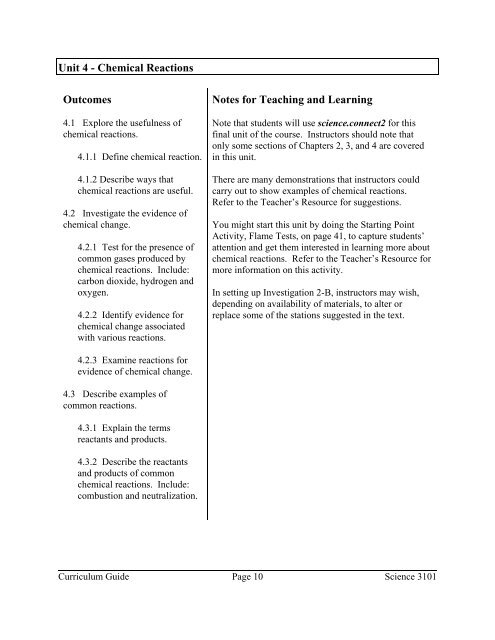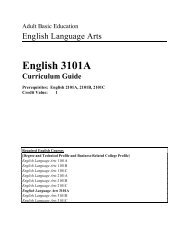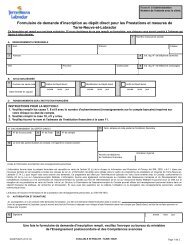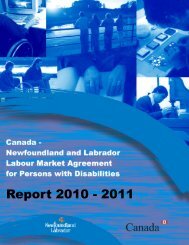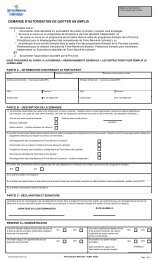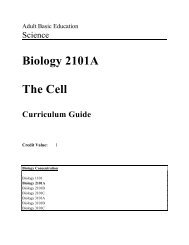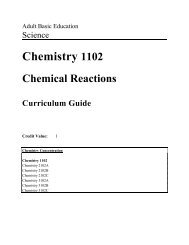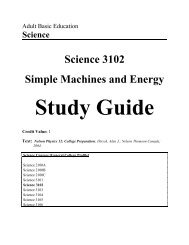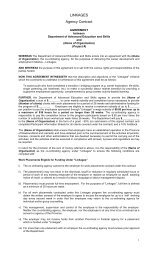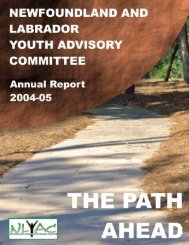Science 3101 Curriculum Guide 2005-06
Science 3101 Curriculum Guide 2005-06
Science 3101 Curriculum Guide 2005-06
You also want an ePaper? Increase the reach of your titles
YUMPU automatically turns print PDFs into web optimized ePapers that Google loves.
Unit 4 - Chemical ReactionsOutcomes4.1 Explore the usefulness ofchemical reactions.4.1.1 Define chemical reaction.4.1.2 Describe ways thatchemical reactions are useful.4.2 Investigate the evidence ofchemical change.4.2.1 Test for the presence ofcommon gases produced bychemical reactions. Include:carbon dioxide, hydrogen andoxygen.4.2.2 Identify evidence forchemical change associatedwith various reactions.Notes for Teaching and LearningNote that students will use science.connect2 for thisfinal unit of the course. Instructors should note thatonly some sections of Chapters 2, 3, and 4 are coveredin this unit.There are many demonstrations that instructors couldcarry out to show examples of chemical reactions.Refer to the Teacher’s Resource for suggestions.You might start this unit by doing the Starting PointActivity, Flame Tests, on page 41, to capture students’attention and get them interested in learning more aboutchemical reactions. Refer to the Teacher’s Resource formore information on this activity.In setting up Investigation 2-B, instructors may wish,depending on availability of materials, to alter orreplace some of the stations suggested in the text.4.2.3 Examine reactions forevidence of chemical change.4.3 Describe examples ofcommon reactions.4.3.1 Explain the termsreactants and products.4.3.2 Describe the reactantsand products of commonchemical reactions. Include:combustion and neutralization.<strong>Curriculum</strong> <strong>Guide</strong> Page 10<strong>Science</strong> <strong>3101</strong>


